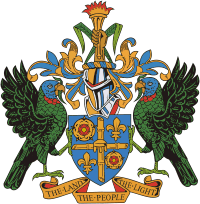St Lucia’s going metric!
- Metric Tags:
By Kayra Williams
In 1978, St Lucia’s then metrication committee took the first steps to move towards the international system of measurements. Their achievements included the inclusion of the metric system in school programs. Back then there was no obligation for the commercial sector to adopt the metric system but now with the European Union’s January 1st deadline for the metric system to be put in place, further steps have been taken to fully implement the metric system.
The launching of the metrication board held on Wednesday at the conference room of the Bay Gardens Hotel marked the second time the board had been launched. After the first launch, the board had been dissolved because the majority of the board was made up of public sector representatives; there were eight permanent secretaries.
According to Guy Mayers, an entire chapter in the new EPA agreement is dedicated to technical barriers in trade. Metrication is among those barriers. Mayers took the opportunity to encourage other OECS countries to follow St Lucia’s lead in putting metrication measures in place. "The metric system is a modern and standardized system for trade," he said. "It’s more user-friendly and once consumers get used to the system, they’ll find it easy to use."
Anselm Gittens, head of the metrology department at St Lucia Bureau of Standards said the change to the metric system was necessary primarily due to trade. With the exception of the US, most industrialized countries already imported and exported in metric units. The US was the only industrialized countries not fully metric but with the UK as one of its major trading partners, the US was now being pressured to move to the metric system, a less confusing system of measurements.
After the January 1, 2010 deadline, even though products are exported with correct weights, those with imperial units will not be allowed into the UK. "Countries who remain imperial will lose the opportunity to export and expand their market as they shut out the rest of the world from being their customers," said Gittens. "If we resist change we are imposing trade barriers on ourselves."
Following remarks, the metrication board was introduced. Herbert James from the National Consumers Association would be the chairman and Roger Joseph in charge of public relations. Other members include; Joe Ann Haynes, Dr Gabriel, Victor Emmanuel, Deborah Edward, Roger Joseph, Marcus Edward, Martin Dorville, Marie Lawrence, and Emmanuel St Croix.
The job of the metrication board, according to Guy Mayers, was to ensure the conversion process was low cost. The minister told the new chairman there was no room for cost overruns with the new metrication process. "I don’t think we have time for a third launch," Mayers said. "We want to ensure this is done at the lowest cost and to the best advantage of society."
The trade minister said there would be much public education and the aim was for the process to be as painless as possible. He said the launch represented the resolve and commitment of government to continue a process that began years ago and bring it to completion. The trade minister anticipated a phased conversion process where more metric ready sectors such a petroleum and transportation sectors would take the lead followed by less metric ready sectors. Priority would be given to sectors actively engaged in exporting or with the potential to do so.
The new chairman gave final remarks. Herbert James said it was a pleasure to serve on the board and he’d do his best to ensure that the goal was achieved before the 2010 deadline. "A lot of sectors can be dealt with in a couple of months like the survey and legal departments," he said. "We don’t have to go far to get these things done so a lot of these sectors can be achieved by the end of the year and hopefully by July next year, we should be able to put the icing on the cake and then it will be ready to be eaten."
James said areas like agriculture; fisheries and construction were among the more difficult sectors. "It will be hard to make changes in these areas where people have restrictions because of their mind-set," he said. "It would be hard getting them to use kilos instead of pounds."
source: http://www.stluciastar.com/NewsHome/LocalNews/tabid/571/newsid1152/3650/...

